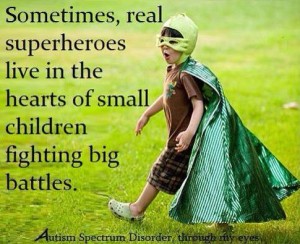I was listening to an interesting conversation about special education in Ontario on CBC Radio and hearing a lot of frustration with accessing resources. How can you access the resources your child needs? Let’s look at what special education means, who is involved and then how to access resources.
Special Education? What’s wrong?
“What’s wrong?” is the first part of the problem. There is never anything wrong with children. They may have educational challenges and it’s up to us to help our children get the education they deserve.. How?
- Individual Education Plans (IEP)
- Assistive Technology
- Special Education Teachers
- Educational Assistants
There is no way to list everything but these are certainly some to consider. The challenge for parents and teachers is recognizing a need, developing a plan and then accessing resources.
Recognize the need.
 We all like to think our children are perfect. They are but that doesn’t mean they all have the same needs. Somehow, special needs education has been turned into a negative. It’s a shame we let the social stigma cloud our judgement and prevent us from identifying special needs and developing a plan to take advantage of those same needs and turn them into advantages. For example, someone with a hearing loss may develop the ability to remember much more visual detail. They may well turn into great designers or artists. Visually impaired often hear things that most of us don’t. Do interpreters need the ability to hear or see? People with Obsessive Compulsive Disorder (OCD) could turn out like Bill Gates because they have an amazing ability to focus. Others may have an Attention Deficit Disorder (ADD) and be better at juggling multiple tasks. Recognize the needs and strengths and then work with educators to develop a plan to take advantage of strengths and build on them.
We all like to think our children are perfect. They are but that doesn’t mean they all have the same needs. Somehow, special needs education has been turned into a negative. It’s a shame we let the social stigma cloud our judgement and prevent us from identifying special needs and developing a plan to take advantage of those same needs and turn them into advantages. For example, someone with a hearing loss may develop the ability to remember much more visual detail. They may well turn into great designers or artists. Visually impaired often hear things that most of us don’t. Do interpreters need the ability to hear or see? People with Obsessive Compulsive Disorder (OCD) could turn out like Bill Gates because they have an amazing ability to focus. Others may have an Attention Deficit Disorder (ADD) and be better at juggling multiple tasks. Recognize the needs and strengths and then work with educators to develop a plan to take advantage of strengths and build on them.
Individual Education Plans (IEP).
When a student has been identified as having a learning “disability”, or special education need, you may be able to work with your child’s educators and develop a plan of action to help your child achieve educational success. This could involve technology, resources for you to use at home or there may be funding available to provide Special Education Teachers and/or Educational assistants. Once special needs are officially identified, additional supports may be triggered. You may want to add your doctors to the mix. There could be supports through insurances or government health programs that require referrals.
Access Resources.
First, you have to identify the need. Then you have to get the educational system to recognize the need. Now the process begins. As unfair as it is, you need to be part of the solution. I say unfair because I recognize how difficult it is to access educators at a reasonable time. Many parents don’t get home until 7 pm or later. Use your email or take time to call from work and set up appointments. You may need to take a few sick days to advocate for your child. Are you prepared to do whatever it takes? Before you meet with the people that are helping raise your child, take the time to understand the different paths you can take. That’s right, you are not alone in this journey. Most educators feel your pain and frustration. They really do want to help if you are willing to take the time to work with them. There are many links and resources on the Ministry of Education web site. Make Google work for you. You might even consider using your #LegalSavingsPlan and call your law firm for clarification on rights. They may even be able to provide some resources you wouldn’t have thought about.
Assistive Technology
In some cases, there are technology tools that can help. 
- Electronic readers for visually impaired.
- Computers and hearing aids for hearing impaired.
- Equipment for physically challenged.
Years ago, there was little adaptive technology available. Today, there are all kinds of tools but they can be hard to find if you aren’t used to looking. Whether it’s mobility issues or information processing, there are many solutions. Ask for help. For many of us, that’s the greatest challenge, asking.
Special Education Teachers (SET) and Educational Assistants (EA)
These people are angels! SET’s and EA’s are the staff that will work most closely with your child. Keep in mind that they may still be responsible for more than one child and will need your help to best focus their attention and resources. In order to have access to SET’s and EA’s, you may require a needs assessment. I know it’s a long wait and can be very challenging. This is where you might be able to get help from your doctor to speed things along. Sadly, there is a bit of a two tier system here. You can pay privately for an assessment although it can be cost prohibitive for many.
In Closing
It’s a reasonable expectation today that our educators will accommodate the needs of our children wherever possible. With the demands placed on educators today, you may need to help them understand the needs for your child. The teacher needs to balance the needs of your child with the needs of the rest of the class. You need to assume the role of advocate. Here are some links you might find useful:
I invite you to use the comments field to leave other resources that will help others. Make it a great day, Barry P.S. What am I thankful for today? I’m thankful for those angels who work with children with special needs. I’m thankful for people who recognize opportunities to improve a child’s education early. I’m thankful for parents who will share their stories. What are you thankful for today?  Click the picture above to learn more about affordable access to legal advice.
Click the picture above to learn more about affordable access to legal advice.